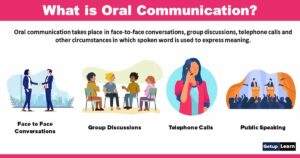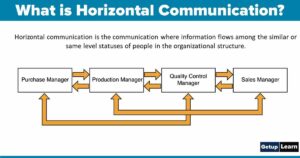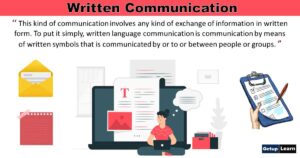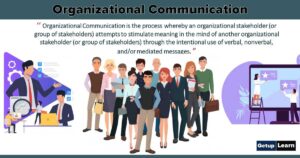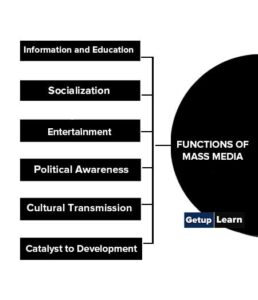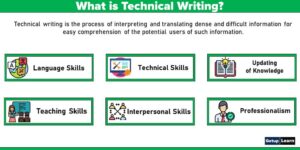Table of Contents
What is Writing?
Writing is a medium of communication that represents language through the inscription of signs and symbols. In other words, writing is a method of representing language in visual or tactile form.
Writing systems use sets of symbols to represent the sounds of speech, and may also have symbols for such things as punctuation and numerals. Writing is a powerful tool for learning, one that plays a critical role in our education.
Writing is a Process
- Good writing does not happen overnight. It is a long process. It requires planning, drafting, rereading, revising and editing.
- There are no shortcuts. Practice makes perfect.
Five Steps to Successful Writing
Successful writing on the job is not the product of inspiration, nor is it merely the spoken word converted to print; it is the result of knowing how to structure information using both text and design to achieve an intended purpose for a clearly defined audience.
The best way to ensure that your writing will succeed whether it is in the form of a memo, a résumé, a proposal, or a Web page is to approach writing using the following steps:
- Preparation
- Research
- Organization
- Writing
- Revision
Preparation
Writing, like most professional tasks, requires solid preparation. In fact, adequate preparation is as important as writing a draft.
In preparation for writing, your goal is to accomplish the following four major tasks:
- Establishing Your Purpose
- Assessing Your Audience and Context
- Determining the Scope.
- Selecting the Medium
Establishing Your Purpose
To establish your primary purpose simply ask yourself what you want your readers to know, to believe, or to be able to do after they have finished reading what you have written. Be precise. Often a writer states a purpose so broadly that it is almost useless
A purpose such as “to report on possible locations for a new research facility” is too general.
For example, a secondary purpose of the research facilities report might be to make corporate executive readers aware of the staffing needs of the new facility so that they can ensure its smooth operation regardless of the location selected.
Assessing Your Audience and Context
The next task is to assess your audience. Again, be precise and ask key questions. Who exactly is your reader? Do you have multiple readers? Who needs to see or to use the document? What are your readers’ needs in relation to your subject?
What are their attitudes about the subject? (Skeptical? Supportive? Anxious? Bored?) What do your readers already know about the subject? Should you define basic terminology, or will such definitions merely bore, or even impede, your readers?
Are you communicating with international readers and therefore dealing with issues inherent in global communication?
Determining the Scope
Determining your purpose and assessing your readers and context will help you decide what to include and what not to include in your writing.
Those decisions establish the scope of your writing project. If you do not clearly define the scope, you will spend needless hours on research because you will not be sure what kind of information you need or even how much.
Given the purpose and audience established for the report on facility locations, the scope would include such information as land and building costs, available labor force, cultural issues, transportation options, and proximity to suppliers.
Selecting the Medium
Finally, you need to determine the most appropriate medium for communicating your message. Professionals on the job face a wide array of options from E-mail, fax, voice mail, videoconferencing, and Web sites to more traditional means like letters, memos, reports, telephone calls, and face-to-face meetings.
Research
The only way to be sure that you can write about a complex subject is to thoroughly understand it. To do that, you must conduct adequate research.
whether that means conducting an extensive investigation for a major proposal through interviewing, library and Internet research, and careful note-taking or simply checking a company Web site and jotting down points before you send an e-mail to a colleague.
Methods of Research
Researchers frequently distinguish between primary and secondary research, depending on the types of sources consulted and the method of gathering information.
Primary research refers to the gathering of raw data compiled from interviews, direct observation, surveys, experiments, questionnaires, and audio and video recordings.
For example. In fact, direct observation and hands-on experience are the only ways to obtain certain kinds of information, such as the behavior of people and animals, certain natural phenomena, mechanical processes, and the operation of systems and equipment.
Sources of Information
As you conduct research, numerous sources of information are available to you, including the following:
- Your own knowledge and that of your colleagues.
- The knowledge of people outside your workplace, gathered through interviewing for information.
- Internet sources, including Web sites, directories, archives, and discussion groups.
- Library resources, including databases and indexes of articles as well as books and reference works.
- Printed and electronic sources in the workplace, such as various correspondence, reports, and Web intranet documents.
Consider all sources of information when you begin your research and use those that are appropriate and useful. The amount of research you will need to do depends on the scope of your project. See also documenting sources.
Organization
Without organization, the material gathered during your research will be incoherent to your readers. To organize information effectively, you need to determine the best way to structure your ideas; that is, you must choose a primary method of development.
Methods of Development
An appropriate method of development is the writer’s tool for keeping information under control and the readers’ means of following the writer’s presentation. As you analyze the information you have gathered, choose the method that best suits your subject, your readers’ needs, and your purpose.
Outlining
Once you have chosen a method of development, you are ready to prepare an outline. Outlining breaks large or complex subjects into manageable parts. It also enables you to emphasize key points by placing them in the positions of greatest importance.
By structuring your thinking at an early stage, a well-developed outline ensures that your document will be complete and logically organized, allowing you to focus exclusively on writing when you begin the rough draft.
An outline can be especially helpful for maintaining a collaborative writing team’s focus throughout a large project.
Writing
When you have established your purpose, your readers’ needs, and your scope and have completed your research and your outline, you will be well prepared to write the first draft. Expand your outline into paragraphs, without worrying about grammar, refinements of language usage, or punctuation.
Writing and revising are different activities; refinements come with revision. Write the rough draft, concentrating entirely on converting your outline into sentences and paragraphs. You might try writing as though you were explaining your subject to a reader sitting across from you.
Do not worry about a good opening. Just start. Do not be concerned in the rough draft about exact word choice unless it comes quickly and easily concentrates instead on ideas. Finally, you will need to write a conclusion that ties the main ideas together and emphatically makes a final significant point.
The final point may be to recommend a course of action, make a prediction or a judgment, or merely summarize your main points—the way you conclude depends on the purpose of your writing and your readers’ needs.
Revision
The clearer finished writing seems to the reader, the more effort the writer has likely put into its revision. If you have followed the steps of the writing process to this point, you will have a rough draft that needs to be revised. Revising, however, requires a different frame of mind than does writing the draft.
During revision, be eager to find and correct faults and be honest. Be hard on yourself for the benefit of your readers. Read and evaluate the draft as if you were a reader seeing it for the first time.
Check your draft for accuracy, completeness, and effectiveness in achieving your purpose and meeting your readers’ needs and expectations.
Trim extraneous information: Your writing should give readers exactly what they need, but it should not burden them with unnecessary information or sidetrack them into loosely related subjects. Do not try to revise for everything at once.
Read your rough draft several times, each time looking for and correcting a different set of problems or errors. Concentrate first on larger issues, such as unity and coherence; save mechanical corrections, like spelling and punctuation, for later proofreading. See also ethics in writing.
Finally, for important documents, consider having others review your writing and make suggestions for improvement. For collaborative writing, of course, team members must review each other’s work on segments of the document as well as the final master draft.
Use the Checklist of the Writing Process to guide you not only as you revise but also throughout the writing process.




